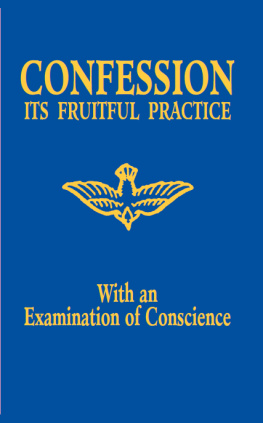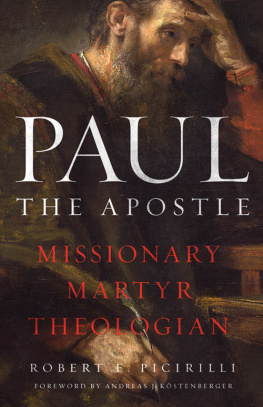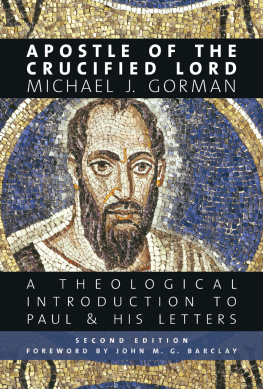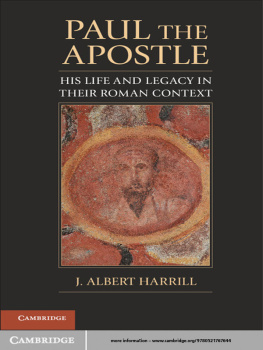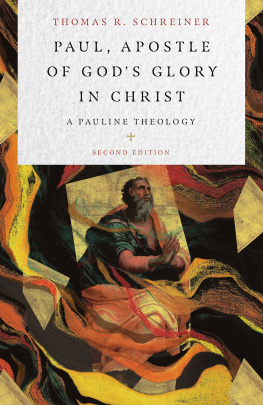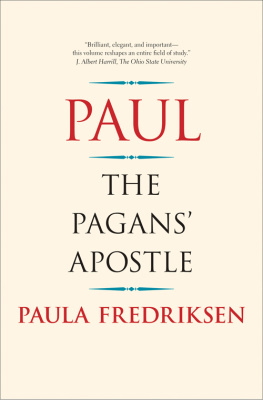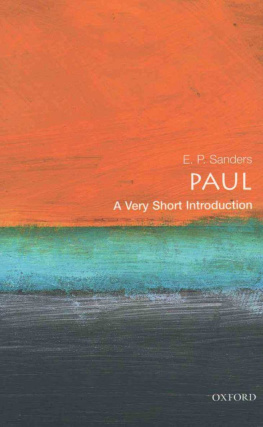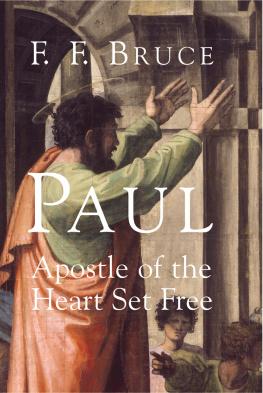INTRODUCTION
MICHAEL F. BIRD
T he apostle Paul, writing about his ministry, said to the Corinthians:
I have worked much harder, been in prison more frequently, been flogged more severely, and been exposed to death again and again. Five times I received from the Jews the forty lashes minus one. Three times I was beaten with rods, once I was pelted with stones, three times I was shipwrecked, I spent a night and a day in the open sea, I have been constantly on the move. I have been in danger from rivers, in danger from bandits, in danger from my own people, in danger from Gentiles. (2 Cor. 11:23 26)
Evidently, Paul was a controversial figure. He prompted vehement opposition from Jewish Christians, violent reaction from his Judean compatriots, and even criminal punishment from Greco-Roman authorities. You do not get beaten, flogged, imprisoned, and stoned without saying and doing things that are deemed controversial, offensive, and even subversive.
Beyond the image of Paul the controversialist, we must remember that Paul was responsible for shaping the early church in a significant way.subsequent centuries, both orthodox and heretical, took inspiration and impetus from Paul. Indeed, it seems that spiritual renewal and theological reformation, from Augustine to Martin Luther to Karl Barth, have been largely driven by a fresh discovery (or recovery) of Paul for their day.
That said, Paul remains an inspirational and incendiary figure for our own times as well. By inspirational I mean that many still see themselves as Paulinists in trying to promote a theological vision and a Christian ethic, and to follow an evangelistic mandate that is distinctively Pauline. Others see themselves as furthering Pauls message of reconciliation in their own culture and context. And others regard Paul as the ultimate inclusivist, who was a prophet of postmodern values of diversity, tolerance, and pluralism. On the incendiary scheme, Pauls letters have facilitated heated debates inside and outside of the church as to what he meant by his few remarks on Israel, homosexuality, women, spiritual gifts, and the end times. Pauls letters have been quoted in endless theological fights, denominational splits, and mutual denunciations all by people who claim that they hold to the proper interpretation of the true Paul.
In the attempt to get beyond the mass of debate that is Pauline studies, in both its historical and current forms, the modest aim of this volume is to contrast four competing perspectives on the apostle. In particular these contributors look at what Paul meant and what he continues to mean for contemporary audiences. To that end, assembled in this volume is a creative cast of Pauline scholars, well acquainted with Pauls writings and the vast scholarly literature that surrounds him, who will set forth their own perspectives on Paul. The aim is for each contributor to set forth his own portrait of Paul and then to have them engage with one another critically in a series of responses.
The commentators involved in this volume been carefully selected based on their reputation and expertise in their respective fields. The contributors involved in this exchange include an Evangelical, a Catholic, a mainline Protestant, and a Jew. A diverse bunch indeed! To keep the exchange to a containable and realistic set of topics, it was decided that each of the contributors would touch on four key areas in their respective essays. These topics are:
What did Paul think about salvation?
What was Pauls view of the significance of Christ?
What is the best framework for describing Pauls theological perspective?
What was Pauls vision for the churches?
These topics are controversial and thereby provide ample opportunity for the contributors to exposit their own distinctive understanding of Paul. These are questions where diversity, debate, and disagreement emerge precisely over what Paul taught in these areas. It is here that readers have the opportunity to learn and assess each essay as to how it properly accounts for the life and letters of the apostle Paul. Now obviously the contributors do not disagree over everything, and common ground was reached in some areas, but one does see the diverse ways in which Paul has been understood and appropriated. Readers are invited to listen and learn from the exchange as these scholars lock horns over Paul. Thankfully, the exchange, controversial and critical as is to be expected, has been undertaken with a spirit of generosity and charity that Paul himself would approve of.
Concerning our illustrious contributors, let me introduce them to you and summarize their positions. Thomas R. Schreiner, James Buchanan Professor at Southern Baptist Theological Seminary, is a veteran in Pauline studies, having written volumes on Paul and the law, a Pauline theology, a guide to Pauline interpretation, as well as commentaries on Romans and Galatians.how these Reformed distinctives have ample biblical support especially in the Pauline corpus.
According to Schreiner, the framework for understanding Paul is eschatology. Paul believed that the Old Testament promises about a new exodus, a new covenant, and a new creation have been partially realized in the work of Jesus Christ and the gift of the Holy Spirit. Believers still look forward, however, to the final consummation of these promises in the future. As for the significance of Jesus Christ for Paul, Schreiner contends that Jesus is the heart and soul of Pauline theology and that he permeates every topic of Pauls theological thought. That centrality is evident in a number of areas, including Pauls testimony to the churchs worship and sacramental life, the content of his gospel, and Pauls perspective that all life is lived under the aegis of Jesus lordship. As such, Schreiner regards Christ as the center of Pauls framework since Christ is the goal of Gods purposes.
Concerning Pauls view of salvation, in Schreiners estimation, Paul identifies salvation as deliverance from the consequences of sin, namely, divine vengeance and eternal destruction. Salvation, then, is the manifestation of Gods love by rescuing sinners from the retribution that their rebellion against God deserved. Persons are saved by the gracious mercy of God shown on the cross and do not merit salvation by their good deeds. The chief instrument of salvation is the substitutionary death of Jesus for the ungodly. In regards to the Pauline vision of the church, Schreiner identifies several constituent elements to Pauls thought. For a start the Pauline churches are considered to be a true Israel and new temple of sorts as they inherited the promises of the chosen nation. The church is the body of Christ, and Christ is the head of that body and the basis for unity among its many members.
Luke Timothy Johnson is a former Benedictine monk and priest; he presently is the Robert W. Woodruff Professor of New Testament and Christian Origins at the Candler School of Theology, Emory University.LukeActs, the Pastoral Letters, the letter to the Romans, and the letter of James. He writes with a particular interest in the communal and experiential dimensions of the early church. Johnson represents a generation of post-Vatican II Catholic scholars who have embraced historical criticism while recognizing as well the importance of patristic and medieval interpretation.



